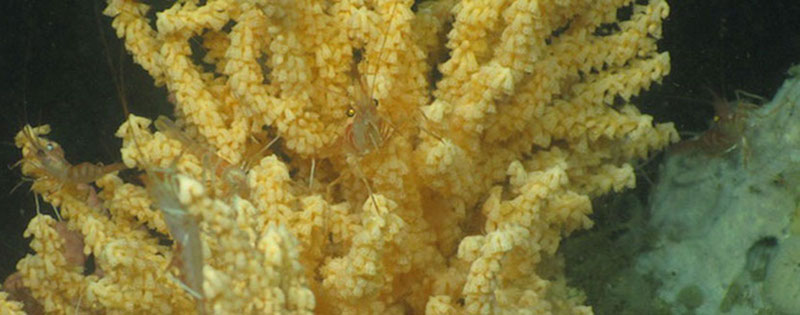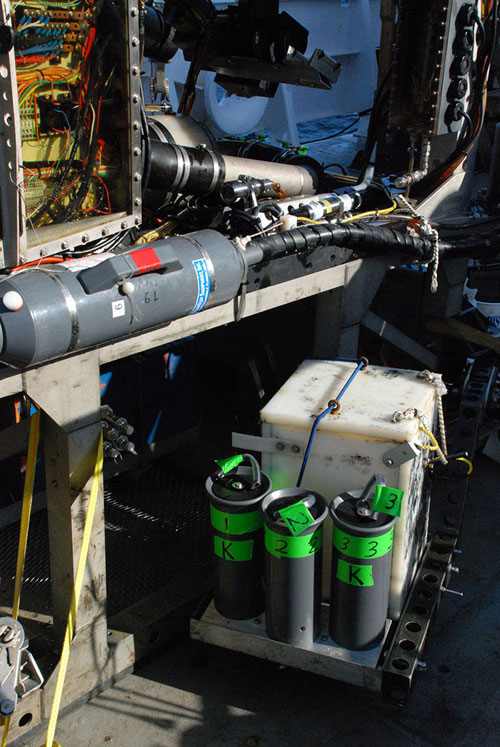
By Christina Kellogg - U.S. Geological Survey
May 4, 2013

Christina Kellogg and her technician Mike Gray hope to compare the bacterial communities present on Primnoa resedaeformis corals, seen here, in Baltimore and Norfolk Canyons. Image courtesy of Christina Kellogg. Download image (jpg, 61 KB).
Like humans, corals have bacteria that live in them and on them. These bacteria are a natural part of the coral’s biology (just like the bacteria in our guts) and are necessary for the health of the coral. However, we are still in the early stages of understanding which bacteria are present and what they are doing for the corals.
Early studies on shallow-water corals found that coral species seemed to maintain specific bacterial communities – meaning that a species of brain coral in Bermuda, Barbados, or Bocas del Toro would all have the same kind of bacterial community, but a brain coral and a star coral right next to each other would have different bacterial communities.
More recent studies have found that sometimes the coral-associated bacteria are more similar based on geographic area – meaning several coral species on one reef had bacterial communities more similar to each other than to corals of their same species on other reefs.

Seen unfolding from the starboard side of Jason is a set of green-labled sampling containers, the ‘quiver’, that will house any specimens of Primnoa found and collected at Norfolk Canyon. Image courtesy of Deepwater Canyons 2013 - Pathways to the Abyss, NOAA-OER/BOEM/USGS. Download larger version (jpg, 460 KB).
Confused yet? The point is that we still don’t have a clear picture of what influences the coral-associated microbial community more; is it the coral host or local environmental factors? And that’s just in shallow water. We know even less about deep-sea corals.
That makes this study, comparing Baltimore and Norfolk Canyons, a perfect opportunity to find out. We collected Primnoa resedaeformis (sea corn) corals from Baltimore Canyon last year and will be collecting more this year from Norfolk Canyon. Will the bacterial communities on these Primnoa be basically the same because they share the same coral host, or will they be differentiated by their habitat (clustering separately into Baltimore and Norfolk groups)?
To take it a step further, we are lucky enough to have some collaborators working on a Primnoa species in the Gulf of Alaska who have collected samples for us. How different are the bacterial communities of these Pacific-living coral cousins compared to the inhabitants of our mid-Atlantic canyon corals?
To find out, we will extract genetic material (DNA) from the bacterial community of each coral sample and sequence it to create a census of the bacterial groups present. Comparing these lists between canyons and oceans will help us determine which is more important in shaping the coral-associated bacterial community: host or habitat?